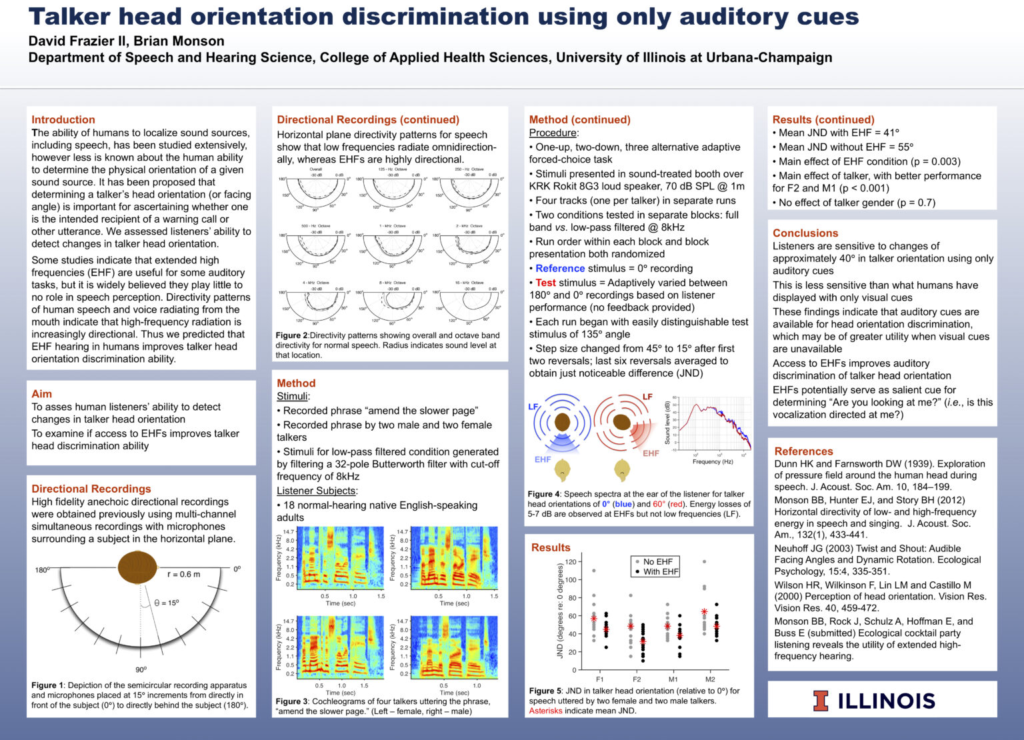Humans have been endowed with an auditory system sensitive to a broad range of frequencies and a vocal apparatus that produces energy across that range of frequencies, suggesting these two systems have been tuned to each other over the species lifetime. However, speech/voice perception research and technology has, for various reasons, focused largely on the low-frequency portion of the speech spectrum. For example, your cell phone probably only transmits speech energy at frequencies below 4000 Hz, though human voices produce considerable energy at frequencies higher than that. HD voice (a.k.a. wideband audio) applications (e.g., Skype) and hearing aids are moving toward representing higher frequencies. Extended high-frequency energy (energy produced at frequencies >8 kHz) provides the auditory brain with useful information for speech and singing voice perception, including cues for speech source location, talker head orientation, speech/voice quality, vocal timbre, and speech intelligibility in noisy environments. These cues are also utilized by children, who typically have much more sensitive high-frequency hearing than adults. For example, school-aged children use high-frequency energy when learning new words, and show significant word-learning deficits when deprived of the high frequencies.

Our research in this area aims to uncover the ecological value of extended high-frequency hearing and its utility in everyday speech/voice perception. The ultimate goal of this research is to improve communication technology (hearing aids, cochlear implants, mobile phones). This research was recently featured by our institution and is currently supported by a grant from the National Institute on Deafness and other Communication Disorders (NIDCD). You can read a bit more about it in lay-language papers here and here. Below are a few examples of what the high frequencies sound like when isolated. See if you can figure out if these recordings are male or female and what they are speaking or singing. (You’ll need a good set of high-fidelity headphones to hear the high frequencies well)
Poster Gallery
